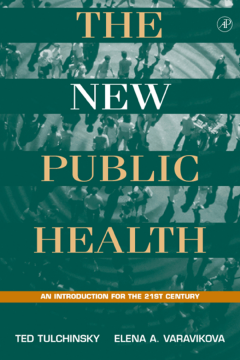
Additional Information
Book Details
Abstract
Countries around the world are engaged in health reform, which places great demands on health care providers and systems managers. From the managed care revolution in the United States to the rebuilding of health systems in postcommunist Russia, these reforms impact millions of health care workers, government officials, patients, and the public alike.
The New Public Health will help students and practitioners understand factors affecting the reform process of health care organization and delivery. It links the classic public health issues such as environmental sanitation, health education, and epidemiology with the new issues of universal health care, economics, and management of health systems for the new century.
- Provides a comprehensive overview of public health from a global perspective
- Assesses health systems models of the United States, Russia, the United Kingdom, Germany, Canada, Scandinavian countries, and developing countries including China, Nigeria, and Colombia
- Analyzes critical issues of health economics, including forces associated with escalating costs and the strategies to control those costs
- Discusses strategies for dealing with the many ramifications of managed care
- Links medicine with the social sciences, technology, and health management issues as they evolve
In general, the book is easy to read, and the language is not likely to be a major problem for those readers whose first language is not English. In addition, there is a good key to abbreviations and an extensive glossary of terminology, which is likely to be helpful both to beginning public health students in English-speaking countries and to those who are not native English speakers or who are unfamiliar with some of the terminology specific to the United States.
Another important plus are the multiple references and recommended readings and other resources at the end of each chapter. Many of these are Internet sites, which may be more readily available than the suggested books and periodicals, at least in some areas of the world.
In summary, this book is a very ambitious attempt to define an expanded concept of public health and to give an overview of all its components. It is likely to be useful for beginning students but may not be very satisfying for practicing public health professionals, given its very brief treatment of many subjects.
